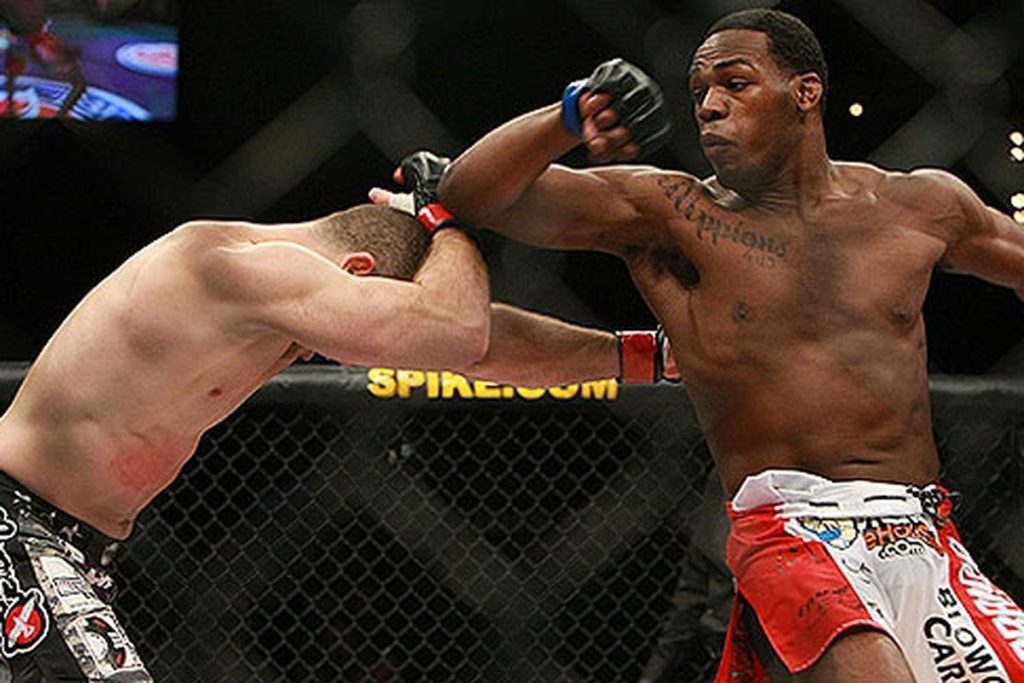The spinning back elbow is a powerful strike where a fighter rotates their body and delivers a sharp elbow strike, usually targeting the opponent’s head or jaw. This technique has its origins in Muay Thai, the ancient martial art of Thailand known as “The Art of Eight Limbs,” where it is called sok glap. Dating back at least to the early 20th century-and likely rooted even deeper in the traditional Muay Boran style-the spinning back elbow was used by Thai fighters to deliver sudden, devastating knockouts. Its force comes from the rotation of the hips and torso, making it both fast and difficult to anticipate. Today, it remains a dynamic weapon in both Muay Thai and MMA, requiring precise timing, balance, and control to execute safely and effectively.
Spinning Back Elbow in Muay Thai vs Spinning Back Elbow in MMA
The spinning back elbow is a dynamic and powerful strike used in both Muay Thai and MMA, but its application and context differ between the two sports. In Muay Thai, the spinning back elbow-known as sok klap-is often used as a flashy, close-range weapon to catch opponents off guard. It relies heavily on timing, precision, and a solid base to avoid being countered or swept, since the fighter momentarily turns their back during the spin. Muay Thai practitioners use it to exploit angles and capitalize on moments when the opponent is advancing or distracted.
In MMA, the spinning back elbow carries the same devastating power but is often thrown both from striking range and the clinch. Fighters like Jon Jones have popularized its use by combining it with cage control and clinch positioning, making it harder to see coming. The MMA version also demands quick recovery to avoid counters, as the fighter must return swiftly to a defensive stance after the strike. The presence of grappling and ground fighting in MMA adds complexity, so the spinning back elbow is used more strategically to create openings or finish fights

How to Properly Utilize Spinning Back Elbow
To throw a spinning back elbow correctly, start with a solid base and maintain your guard. Step across your opponent to create the right angle, placing your foot outside their lead foot. Rotate your hips and torso quickly while keeping your elbow tight and aimed at the target, usually the chin or temple. The strike should follow through with momentum to maximize impact. After landing the elbow, immediately reset to your fighting stance to maintain balance and defense. Avoid stepping back with your rear foot during the spin, as this reduces power and leaves you vulnerable
Why to Utilize Spinning Back Elbow
The spinning back elbow is a high-impact strike that can deliver knockout power due to the rotational force generated by the hips and torso. Its unpredictability makes it an excellent tool to break through an opponent’s guard, especially when they expect straight punches or kicks. Because it comes from an unusual angle, it can bypass traditional blocking methods and catch opponents off balance. Additionally, it can be used as a counterattack or a surprise weapon when your opponent is pressing forward aggressively.
When to Utilize Spinning Back Elbow
Timing is crucial for the spinning back elbow. Ideal moments include when your opponent is moving forward, overcommitting to an attack, or distracted by a feint. In Muay Thai, it’s often thrown when the opponent is close and focused on defending against punches or kicks, making the sudden elbow strike more effective. In MMA, it’s especially useful in the clinch or against the cage, where space is limited and the opponent’s guard may be compromised. Using it when your opponent is controlling your arm or expecting a different strike can increase the chance of landing a clean hit.

Noteable MMA Wins with the Spinning Back Elbow
The spinning back elbow has led to some unforgettable knockouts in MMA. One of the most famous is Jiří Procházka’s knockout of Dominick Reyes at UFC Fight Night 2021, where a perfectly timed spinning back elbow ended the fight in spectacular fashion.
Other notable wins include Ricardo Ramos’ spinning back elbow knockout of Bill Algeo at UFC 273 and Kim Dong-hyun’s finish over John Hathaway at UFC Fight Night 52. These moments show how this technique, when executed well, can quickly change the course of a fight.

